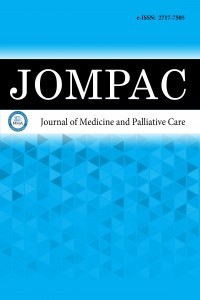1.
Walker L, Cohen K, Rankin J, Crabbe D. Outcome of prenatallydiagnosed congenital lung anomalies in the North of England: areview of 228 cases to aid in prenatal counselling. Prenat Diagn.2017;37(10):1001-1007.
2.
Pollak M, Gur M, Bronshtein M, Solt I, Masarweh K, BenturL. Incidence of congenital thoracic malformations detected byprenatal ultrasound. Pediatr Int. 2020;62(1):89-93.
3.
Bush A. Prenatal presentation and postnatal management ofcongenital thoracic malformations. Early Hum Dev. 2009;85(11):679-684.
4.
Hubbard AM, Harty MP, States LJ. A new tool for prenataldiagnosis: ultrafast fetal MRI. Semin Perinatol. 1999;23(6):437-447.
5.
Cavoretto P, Molina F, Poggi S, Davenport M, Nicolaides KH.Prenatal diagnosis and outcome of echogenic fetal lung lesions.Ultrasound Obstet Gynecol. 2008;32(6):769-783.
6.
Andrade CF, Ferreira HP, Fischer GB. Congenital lungmalformations. J Bras Pneumol. 2011;37(2):259-271.
7.
Witlox RS, Lopriore E, Oepkes D. Prenatal interventions for fetallung lesions. Prenat Diagn. 2011;31(7):628-636.
8.
Paladini D, Volpe P. Thoracic anomalies. In: Paladini D,Volpe P, edıtors.Ultrasound of congenital fetal anomalies. 2ndedition.2014;p. 233-266.
9.
Wall J, Coates A. Prenatal imaging and postnatal presentation,diagnosis and management of congenital lung malformations.Curr Opin Pediatr. 2014;26(3):315-319.
10.
Johnson AM, Hubbard AM. Congenital anomalies of the fetal/neonatal chest. Semin Roentgenol. 2004;39(2):197-214.
11.
Behram M, Oğlak SC, Acar Z, et al. Fetal cardiac tumors: prenataldiagnosis, management and prognosis in 18 cases. J Turk GerGynecol Assoc. 2020;21(4):255-259.
12.
Behram M, Süzen Çaypınar S, Oğlak SC, Sezer S, ÇorbacıoğluEsmer A. Should isolated aberrant right subclavian artery beignored in the antenatal period? a management dilemma. Turk JObstet Gynecol. 2021;18(2):103-108.
13.
Gedik Özköse Z, Oğlak SC, Bestel A, Behram M, Süzen ÇaypınarS, Ölmez F, Özdemir İ. Fetal intracranial hemorrhage: prenatalsonographic diagnosis criteria and postnatal outcomes. J TurkGer Gynecol Assoc. 2022;23(4):268-274.
14.
Recio Rodríguez M, Martínez de Vega V, Cano Alonso R,Carrascoso Arranz J, Martínez Ten P, Pérez Pedregosa J. MRimaging of thoracic abnormalities in the fetus. Radiographics.2012;32(7):E305-21.
15.
Atalay A, Sahin D. Congenital pulmonary malformations fromthe prenatal to the postnatal period: tertiary center experience.ACH Med J 2023;2(4):165-172.
16.
Ionescu C. Thoracic Anomalies [Internet]. Congenital Anomalies- From the Embryo to the Neonate. InTech; 2018. Available from:http://dx.doi.org/10.5772/intechopen.71959.
17.
Huang M, Gong YH. Treatment of congenital pulmonary airwaymalformation with rare high cystic volume ratio: a case reportand literature review. Medicine (Baltimore). 2023;102(47):e36249.
18.
Levine D, Barnewolt CE, Mehta TS, Trop I, Estroff J, Wong G. Fetalthoracic abnormalities: MR imaging. Radiology. 2003;228(2):379-388.
19.
Kaya B, Açar DK, Sezer S. Fetal bronchopulmonary malformations:Prenatal diagnosis and perinatal outcomes. İKSSTD. 2020;12(1):34-38.
20.
Kosinski P, Wielgos M. Congenital diaphragmatic hernia:pathogenesis, prenatal diagnosis and management - literaturereview. Ginekol Pol. 2017;88(1):24-30.
21.
Grandt J, Gottschalk I, Geipel A, et al. Intrauterine thoracoamnioticshunting of fetal hydrothorax with the somatex intrauterineshunt: intrauterine course and postnatal outcome. J Clin Med.2022;11(9):2312.
22.
Klinkner DB, Atwell T, Teles Abrao Trad A, et al. Innovative fetaltherapy for a giant congenital pulmonary airway malformationwith hydrops. Fetal Diagn Ther. 2022;49(5-6):250-255.

